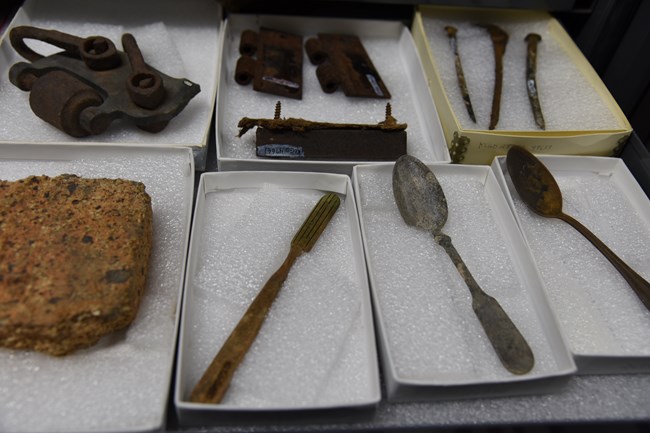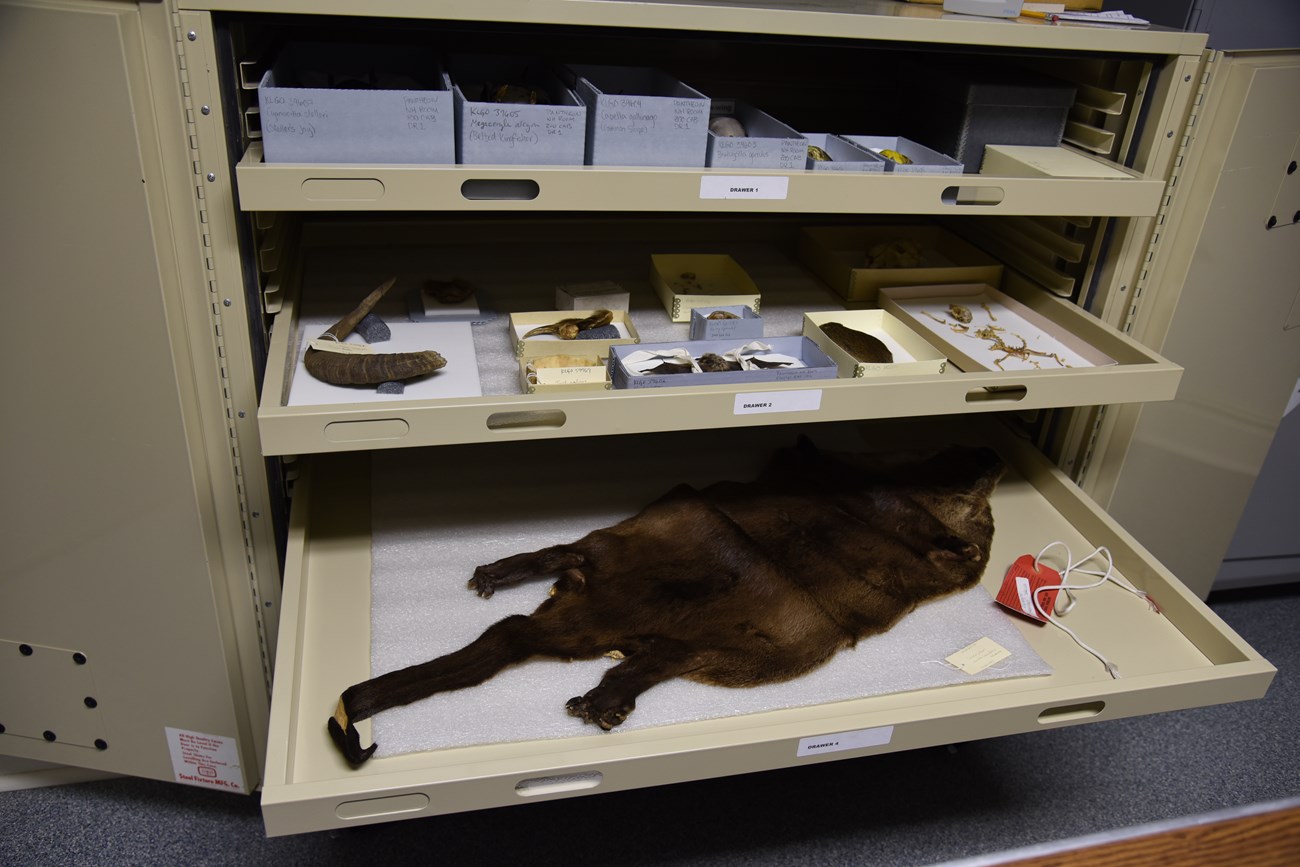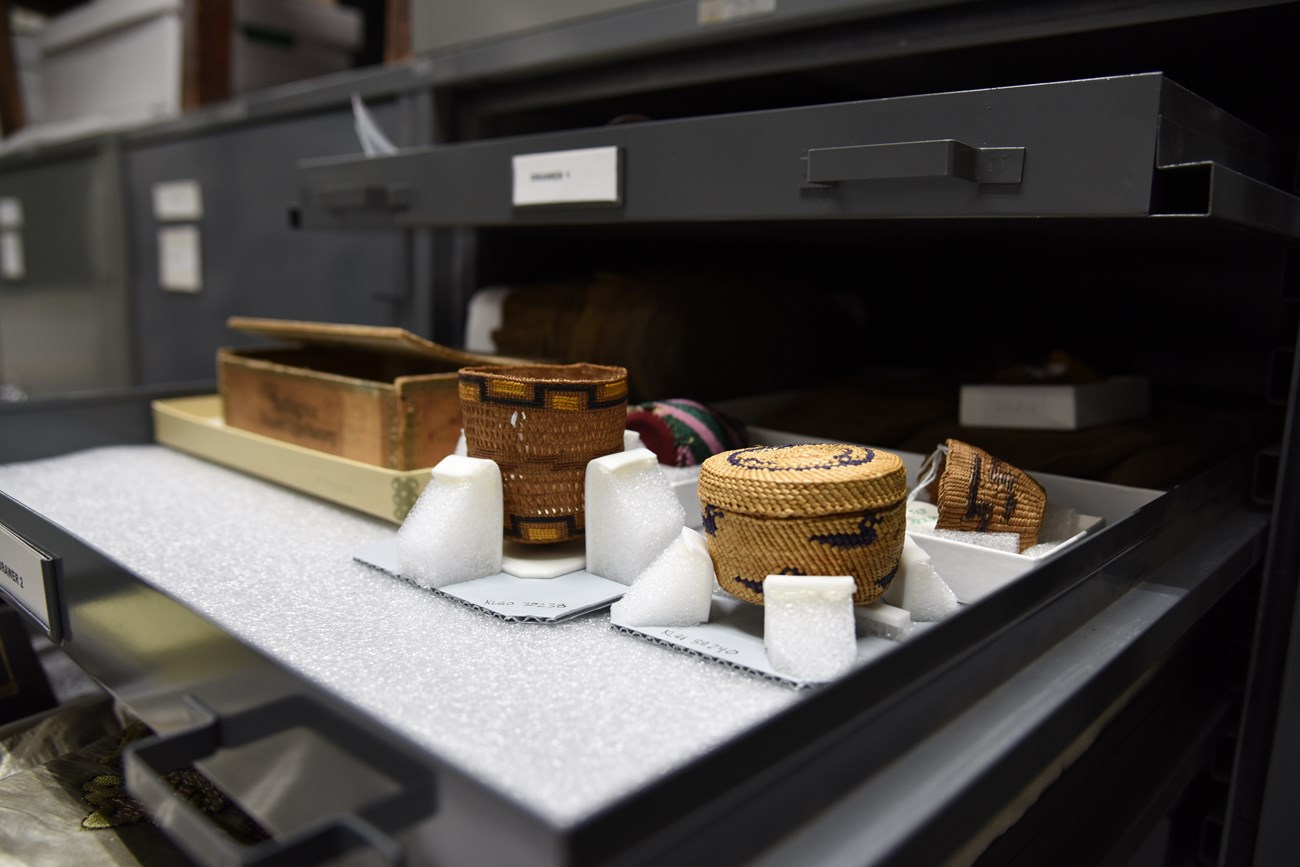
NPS photo The museum collections at Klondike Gold Rush National Historical Park have many uses. Every branch of the park uses the collections in one form or another. Visitors can see the impact of the museum program all around them, whether they know it or not. 
NPS/Tegan Urbanski Helping Preserve HistorySometimes the museum's impact is obvious. Tour through one of our museum spaces and it clear that the museum program was involved in the displays. But the collection's influence can be subtle as well. Have you ever visited a park and seen a maintenance team working on historic buildings? Before rehabilitation work begins we need information about the buildings. They may need architectural drawings, soil samples, archeological reports, or original paint samples. Where do they go to find this information? The museum program archives. Serving the PublicSometimes the park receives an information request from a visitor or private researcher. Using the park's archives is one tool the park can use answer these requests. This collection contains original diaries, letters, historical artifacts, newspapers, and photographs. All of these items aid our researches to help the public.

NPS/Tegan Urbanski Scientific ApplicationsThe museum program also has a natural history collection. It preserves over six thousand natural specimens. The largest part of the collection is the herbarium.

NPS/ Tegan Urbanski Protecting the Past for Future GenerationsThe museum team's mission is to preserve and protect almost 300,000 objects. The cultural collection includes four sub-divisions:
The natural collection is where you can find plants and animals. This is no small undertaking. Maintaining these items allows people of all disciplines the chance to verify and expand their research. Want to learn more? Dive deeper into one of these collections:
Have an Information Request? |
Last updated: July 25, 2024
